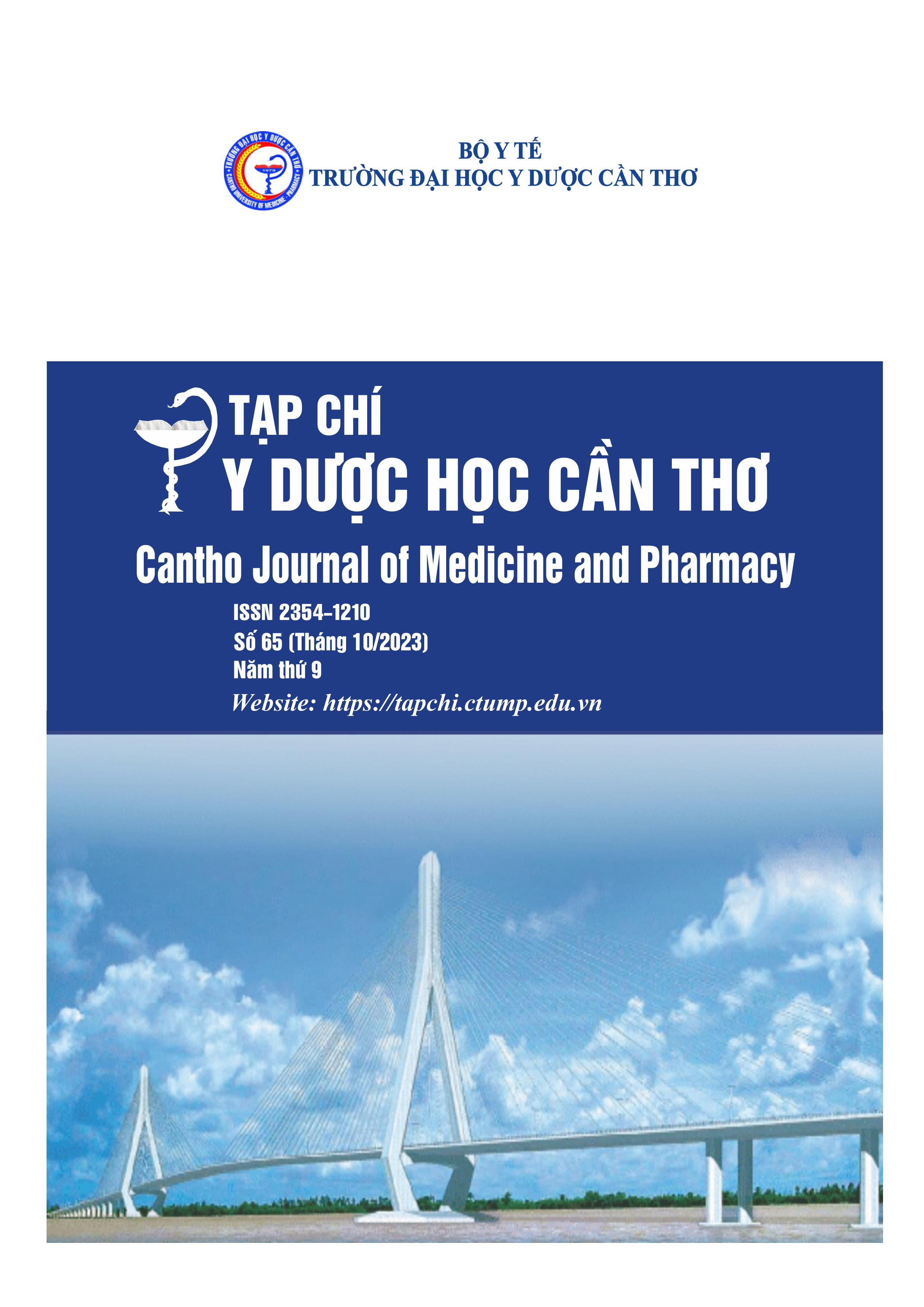STUDY ON CHARACTERISTICS AND VALUE OF 1.5 TESLA MAGNETIC RESONANCE IMAGING IN THE DIAGNOSIS OF SHOULDER JOINT INJURIES AT CAN THO UNIVERSITY OF MEDICINE AND PHARMACY HOSPITAL AND CAN THO CENTRAL GENERAL HOSPITAL IN 2021 – 2023
Main Article Content
Abstract
Background: The labrum, and tendons of the rotator cuff play an important role in the stability of the shoulder; damage to this area will lead to shoulder pain and loss of function. Magnetic resonance of the shoulder used to assess damage to ligaments, cartilage, and the rotator cuff has high diagnostic value. Objectives: Describe the imaging characteristics and value of 1.5 Tesla magnetic resonance in shoulder joint injuries. Materials and method: A descriptive study conducted on 75 patients who underwent 1.5 Tesla shoulder magnetic resonance imaging and shoulder arthroscopy surgery or intra-articular contrast injection at Can Tho University of Medicine and Pharmacy Hospital and Can Tho Central General Hospital from 03/2021 to 03/2023. Results: The average age of the study group was 55 ± 11.98. The highest age was 78, and the lowest was 20. Men have a higher rate of shoulder injuries than women. The most common rotator cuff injury was in the tendon of the supraspinatus muscle with 62.7%, of which the majority were complete rupture (79.7%) and moderate size (55.1%); 29.3% had damage to parietal cartilage, mainly SLAP. The 1.5 Tesla MRA characteristic of shoulder injury assessment has good and very good consensus index compared with the 1.5 Tesla MRI. Value of MRI 1.5 Tesla for assessment of shoulder injury: assessment of type and size of rotator cuff tendon injury has 100% sensitivity and specificity; assessment of injury level has a sensitivity of 50-85.5% and specificity 66.67 – 87.5%; assessment of long head injury of the biceps muscle and damage to rim cartilage has a sensitivity of 85.7 - 100% and a specificity of 100% Conclusion: 1.5 Tesla magnetic resonance imaging of the shoulder joint has high value in the assessment of shoulder joint injuries.
Article Details
Keywords
shoulder magnetic resonance, shoulder MRI, 1.5 Tesla MRI, rotator cuff, labrum
References
2. Phan Châu Hà. Báo cáo kết quả bước đầu ứng dụng kỹ thuật chụp cộng hưởng từ khớp vai với tiêm tương phản từ nội khớp. Tạp chí Y học TP HCM; 2007, 11(1), tr. 10-16.
3. Tăng Hà Nam Anh. Kết quả điều trị rách chóp xoay qua nội soi. Đại học Y Dược Thành phố Hồ Chí Minh; 2014. 158.
4. Schröder R. J., Bostanjoglo M., Kääb M., Herzog H. et al. Accuracy of routine MRI in lesions of the supraspinatus tendon--comparison with surgical findings, Rofo; 2003, 175(7), pp. 920928. https://doi.org/10.1055/s-2003-40431.
5. Roy J. S., Braën C., Leblond J., Desmeules F. et al. Diagnostic accuracy of ultrasonography, MRI and MR arthrography in the characterisation of rotator cuff disorders: a systematic review and meta-analysis. Br J Sports Med; 2015, 49(20), pp. 1316-1328. https://doi.org/10.1136/bjsports-2014-094148.
6. Nguyễn Thị Minh Trang, Đỗ Hải Thanh Anh, Lê Quang Khang, Nguyễn Thị Thùy Linh và cộng sự. Vai trò của cộng hưởng từ không tiêm tương phản nội khớp trong chẩn đoán rách chóp xoay. Tạp chí Y Học TP Hồ Chí Minh; 2021, 25, tr. 74-79.
7. Liu F., Dong J., Shen W. J., Kang Q. et al. Detecting Rotator Cuff Tears: A Network Metaanalysis of 144 Diagnostic Studies, Orthop J Sports Med; 2020, 8(2), pp. 1-26. https://doi.org/10.1177/2325967119900356.
8. Antonio G. E., Griffith J. F., Yu A. B., Yung P. S. et al. First-time shoulder dislocation: High prevalence of labral injury and age-related differences revealed by MR arthrography. J Magn Reson Imaging; 2007, 26(4), pp. 983-991. https://doi.org/10.1002/jmri.21092
9. Phan Châu Hà, Cao Thỉ, Võ Tấn Đức, Trần Minh Hoàng. Vai trò của cộng hưởng từ có chất tương phản nội khớp trong chẩn đoán rách chóp xoay, Tạp chí Y Học TP Hồ Chí Minh; 2017, 17(1), tr. 427-433.


